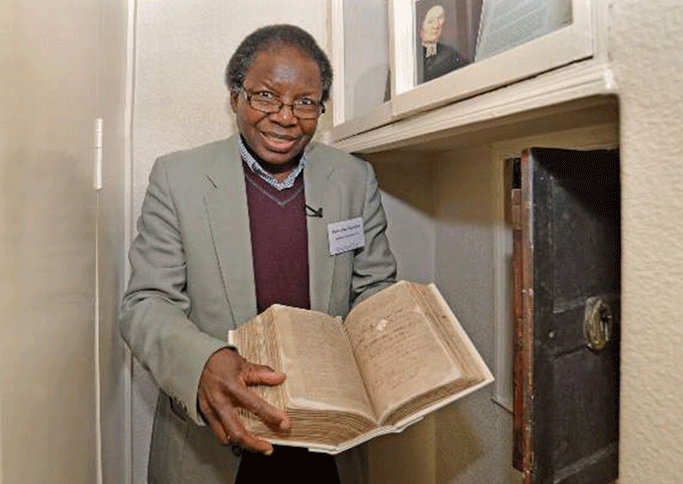
By Onesimus A Ngundu
THE history of Christianity and formal education in Zimbabwe dates back to Christian missionary work. The late David Livingstone, a member of the London Missionary Society, travelled extensively in Zimbabwe, Malawi and Tanzania between 1851 and 1872. He was not only an explorer, but was also a committed Christian and pioneer of tropical medicine.
On Christmas Day, 1859, John Moffatt, William Sykes and Morgan Thomas of the London Missionary Society arrived at the royal home of King Mzilikazi, who and his people had trekked north from the Marico district of the Transvaal and got settled in the area now known as Matabeleland around 1837. Mzilikazi allocated the three missionaries a piece of land on which they established Inyathi, the first Christian mission station in Zimbabwe.
The first Christian missionaries were pioneers, who with their desire to spread the gospel of Jesus Christ in foreign lands, brought remote and isolated areas in Zimbabwe in touch with Christianity and school education for the first time. A Zulu proverb captures the story of the introduction of Christianity and African education in Zimbabwe: “No sun sets without its histories.”
Formal education
Anglican Church missionaries, Hay Upcher, a graduate of Cambridge University, and his assistant N C Panilod set up the first African primary school in Harare in 1894. They and other pioneer missionaries established schools for Africans across the country.
In addition to starting African schools in rural Masvingo, the Dutch Reformed Church missionaries were the first to introduce schools for the disabled — a school for the blind at Chibi mission station, and the first school for the deaf and dumb at Morgester mission station, outside Masvingo city.
When the parents of a blind boy approached Reverend Hugo of the DRC mission for help; he asked his wife, Margaretha, if she could be able to look after the boy.
- Chamisa under fire over US$120K donation
- Mavhunga puts DeMbare into Chibuku quarterfinals
- Pension funds bet on Cabora Bassa oilfields
- Councils defy govt fire tender directive
Keep Reading
Her reply was: “I will try.” And that became the motto of the School for the Blind which was formerly established in 1915, and registered as a school in 1927. Because of challenges with accessibility, in 1938 the school was relocated to its present premises next to Zimuto High School.
It became known as the Margaretha Hugo Copota School for the Blind. Today, this unique institution has a staff complement of 35 primary and 14 high schoolteachers. They all use braille for reading and writing.
When overseas pioneer Christian missionaries first arrived in Zimbabwe, they lived among the people and ate with locals as they learned the local languages. Subsequently, the missionaries reduced spoken languages into written forms. So, before the coming of Christian missionaries, Africans had no written languages. All Christian missionaries who brought Christianity and education to Zimbabwe succumbed to either malaria, or other tropical diseases; and they were all buried in Zimbabwe. The Portuguese Roman Catholic Jesuit, Father DeSilviera, preached the Christian message in Mashonaland in 1560. He ordained one of Munhumutapa’s relatives as the first African clergyman in Zimbabwe, before he was murdered in March 1561. His body was thrown into the Mzengezi River.
Some Christian missionaries who travelled by boat to coastal west Africa often packed their meagre belongings in coffins knowing that they would not survive the hostile heath environment of tropical Africa. And west Africa became known as the “white man’s grave.” As Christian missionaries bid farewell to their families and home churches, they knew that they would die on the mission field. They were compelled by the love of God to take the good news of Jesus Christ to Zimbabwe and other parts of the world. Jesus Christ said of such Christians, “There is no greater love than this, that someone should lay down his life for his friends” (John 15:13).
Primary education
In 1897, the civil authorities passed the first Education Ordinance to provide funding for all mission schools, most of which were located in rural areas where different mission organisations had been allocated places to plant churches and start schools. The curriculum of the African primary school (sub-standard A to Standard 3 and for art and craft in Standards 4 to 6) was based on the pattern of European schools in the country and in the United Kingdom, with the addition of the study of the vernacular. Text books for arithmetic, history and geography had been specially prepared to meet the needs of the appropriate schemes and syllabi.
African teachers were trained to assume the responsibility of teaching. All schools were subject to the same regulations in order to ensure uniformity of procedure.
Secondary education
The government introduced secondary education for those who would have successfully completed eight years of primary education.
Entry to schools was restricted to bonafide students. And students would pursue a two-year course, leading to the Southern Rhodesia Junior certificate examination. The government established the first industrial training centre at Domboshawa in 1920 on some 900 acres of land, just outside Harare. The State accepted the financial responsibility for erecting African primary and secondary schools in all large urban areas. Thus, the government played a crucial role in African school education. At secondary school level, students were prepared for the Cambridge Overseas School Certificate Examination, and provision was made for selected students to continue their studies for a further two years to take the Cambridge Higher School Certificate Examination in preparation for university entry.
The first government secondary school was opened at Goromonzi in 1946. By 1951, seven missionary institutions had established secondary courses. And by 1961, there were four government boarding secondary schools, four government day secondary schools, and 26 mission boarding secondary schools. The University of Zimbabwe was opened in 1952 as the University College of Rhodesia and Nyasaland, and was initially affiliated with the University of London.
Bible translation
Hand-in-hand with African education, Christian missionaries were the first Bible translators (from the original languages, Hebrew and Greek) into Shona; New Testament by 1907 and the whole Bible by 1949. For the first time, Africans could read God’s Word for themselves in their own mother tongue. In Africa, Christian missionaries have translated the Bible or portions of it into over 1 000 African languages; and worldwide into 3 415 languages of the 7 000 living languages of the world. Certainly, there is validity for the claim that the translation of the Bible is one of the greatest Christian missionary accomplishments in the history of communication.
Moreover, it was the Christian missionaries who built mission hospitals and clinics for the health benefits of Africans especially in rural areas. If the truth is to be told, whatever we may think of Christian missionaries, it was they who introduced Christianity and African education to Zimbabwe.
- Onesimus A Ngundu is an academic and former principal of Harare Theological College.











